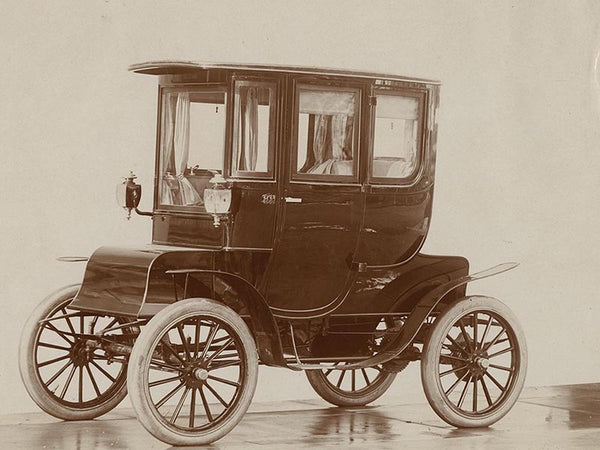
The constant pursuit of free movement is the eternal dream of human beings. It is this dream that drives the continuous progress of human transportation. It is also this pursuit that has brought about the first technological revolution in human history. From time to time, the fixed point of walking, to the emergence of different means of transportation, human legs can travel to almost every corner of the earth, and travel farther and faster. Today, the dream of human beings to move freely has extended from the land. To some planets beyond the ocean, sky and even Earth.
Six million years ago, human beings became a real human being marked by upright walking, and since then began the continuous pursuit of free movement. At that time, human beings traveled the world on their legs alone. Since the invention of tools and learning to use them, humans have been searching for ways to move and carry heavy objects quickly. Any simple and far-reaching invention does not appear in people's minds out of thin air. There must be some phenomenon that triggers inspiration. Just as the ancients thought of canoes when they saw wood floating in the water, the invention of the wheel was inspired by some natural phenomenon. It is said that ancient humans were inspired to invent the wheel when they saw the boulders rolling down the mountain.
The wheel is one of the most important inventions in human history. Although the history of the wheel is only a few thousand years old, it is often compared to the 1.5 million-year-old use of Tinder. Throughout contemporary vehicles and other industrial products, such as the wheels of vehicles, gears and fans on mechanical equipment, there are shadows of wheels everywhere. It was the invention of the wheel that brought about the continuous development of human transportation that continues to this day. Most ground vehicles are based on the turning of wheels.
Before the invention of the wheel, ancient humans used sleds to carry heavy objects. The simplest sled is an inclined surface, and some more complex ones will put several rollers under the heavy object to reduce the resistance of the heavy object to move. The ancient Egyptians used this method to stack many giant stones into magnificent pyramids. The ancient Egyptians might have made a wheel if they improved the roller a little bit, but unfortunately they just missed the invention of the wheel by a little bit. The earliest wheels appeared on the plains of Mesopotamia in 3500 BC, and no one knows who invented them. They're just circular plates nailed to the ends of the axles, and while simple and unwieldy, they greatly reduce the burden on people and pack animals and increase the carrying capacity.

The first wheel
The appearance of wheels has greatly reduced the burden of carrying heavy objects. Based on it, many means of transportation have been developed, such as the wooden bicycle that appeared in the 18th century.

Wooden bicycle made from Leonardo da Vinci's manuscript
Both the wooden bicycles at that time and the metal bicycles later used human power as power. Compared with walking, although the speed has been greatly improved, it cannot completely relieve the burden of human labor. There is an urgent need for a means of transportation that can not only replace manpower, but also have higher speed.
From 1500 BC to 1000 BC, animal husbandry began to rise, and animal power gradually replaced manpower as the main power source of land transportation. The carriage not only reduces the burden on people, but more importantly speeds up the movement speed. The appearance of the horse-drawn carriage has brought great convenience to people's lives. It takes a day's walk to walk, and the horse-drawn carriage can be reached in just a few hours. In 1620, the first horse-cab cab appeared in London, all of which were four carriages. Until the 19th century, the horse-drawn carriage was one of the most important tools in urban and rural transportation.
Although the horse-drawn carriage brings convenience to people, it is far from meeting the needs of human beings to move faster and farther freely. In 1786, the poet Goethe traveled by carriage from Weimar, Germany to Rome, Italy, in just two months! In addition, with the widespread use of horse-drawn carriages, the small streets that used to be clean and peaceful are full of feces, the sound of horses’ hooves and the sound of horses, as well as those flies and mosquitoes crawling out of the horse dung. At this time, people naturally expect to have a clean means of transportation that is less labor-intensive and faster than a horse-drawn carriage!
In this situation, electric vehicles came into being. Compared with the fuel vehicles that appeared later, the electric vehicle itself hardly caused any pollution to the environment, and it became an ideal means of transportation for human beings in that era. Many people may not understand that the appearance of electric vehicles is many years earlier than gasoline vehicles. It can be said that the emergence of electric vehicles is the starting point of human modern transportation, and it has released the dream of free movement of human beings. After a hundred years of reincarnation, although electric vehicles have had a turbulent life and experienced many ups and downs, today, with increasingly serious resource and environmental problems, human beings once again choose electric vehicles to continue the dream of free movement that is faster, more labor-saving and more environmentally friendly.
















